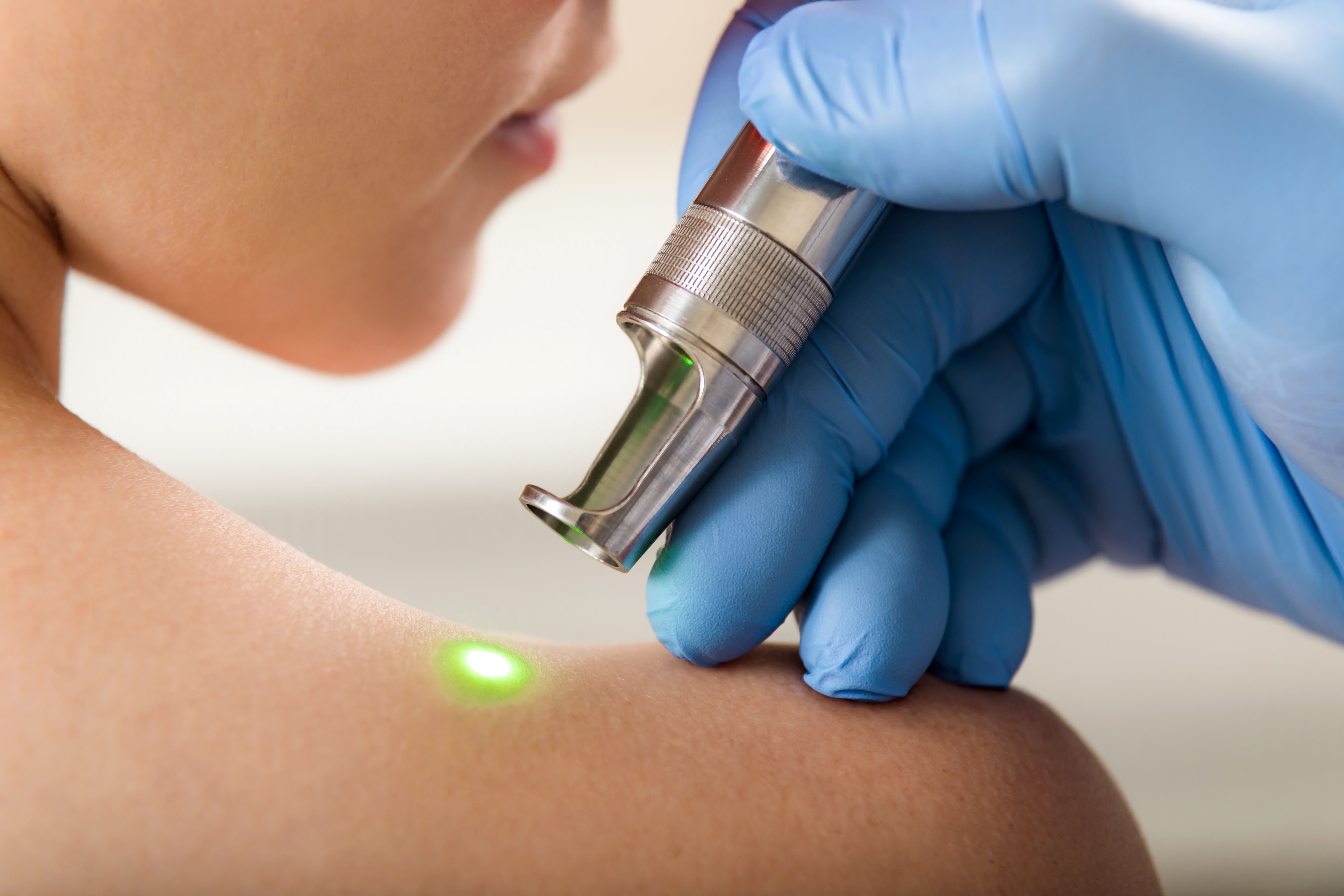- Acne
- Actinic Keratosis
- Aesthetics
- Alopecia
- Atopic Dermatitis
- Buy-and-Bill
- COVID-19
- Case-Based Roundtable
- Chronic Hand Eczema
- Drug Watch
- Eczema
- General Dermatology
- Hidradenitis Suppurativa
- Melasma
- NP and PA
- Pediatric Dermatology
- Pigmentary Disorders
- Practice Management
- Precision Medicine and Biologics
- Prurigo Nodularis
- Psoriasis
- Psoriatic Arthritis
- Rare Disease
- Rosacea
- Skin Cancer
- Vitiligo
- Wound Care
Article
Overtreatment main reason for laser tx complications
Author(s):
Las Vegas - Complications are bound to occur in varying degrees of severity regardless of which laser a physician uses in cosmetic interventions.
Las Vegas - Complications are bound to occur in varying degrees of severity regardless of which laser a physician uses in cosmetic interventions.
The vast majority of these complications are simply due to overtreatment, according to one expert in the field.
Whether the fault lies with an overly confident or inexperienced physician, an "impatient" patient or a combination, physicians can avoid overtreating patients with a healthy dose of prudence and adequate training, says Eduard Victor Ross Jr., M.D., department of dermatology and co-director of the Laser Section at the Naval Hospital in San Diego.
He says that when targeting hair, lentigos and vascular blemishes with visible light technologies, the goal is to selectively heat these structures and leave the normal background skin undamaged. Yet, this is sometimes more easily said than done. In order to optimize cosmetic outcomes, Dr. Ross says that it is helpful to integrate surface cooling, use progressively longer wavelengths, as well as longer pulse durations to better target different structures at various depths.
Complications
"Despite the implementation of these three measures, complications may still occur, and again, overtreatment is the most common mistake. The most common reason is underestimating the amount of epidermal melanin in one's skin, especially true in patients who have chronically bronzed skin in sunny climates. Much of this failing is from a problem in one's ability to discriminate between dark and light skin," he says.
He suggests that a good way to overcome the obstacles in assessing pigmentation is the use of external pigment meters, which can reliably estimate pigmentation at various parts of the body. Using this information, the physician or physician's assistant can successfully wield the laser device with a low degree of side effects.
Repeated, trained use
Dr. Ross stresses that the main ingredient in the recipe for success is repetition. The more familiar the physician is with a laser, the more likely good outcomes will be the final result.
"Over time, the physician becomes attuned to the various sounds the product makes, and when something is amiss, he or she will instantly recognize that something is wrong, for example the failing DCD or the contact chiller. The best laser outcomes are achieved when one uses the same product over and over again and pays close attention to detail regarding the machines daily operations," Dr. Ross says.
Laser check-ups
He adds, it is crucial that before each procedure, the physician check and recheck that every aspect of the laser is functioning properly, be it the external optical components or the delivery device. The cooling hand pieces must be working - the DCD should be firing, the contact chiller must be cold and the Zimmer air cooler should be blowing cold air.
"The numbing creams typically used for patients may be so effective that we are bypassing one feedback mechanism, usually pain, to prevent overtreatment. One rule is that the number the patient is, the more astute the physician must be to ensure that he is not injuring epidermis," Dr. Ross says.
Infrared and radiofrequency devices are designed to target water. Dr. Ross says that the goal here is to cool the epidermis and simultaneously perform "large volume" heating with very low temperature elevations in the superficial and deeper dermis.
"It is absolutely crucial that the physician not overheat this large volume of tissue, as unintentional catastrophic pancutaneous necrosis can occur. Large volume of heating must be dissipated in all directions, including the epidermis. Overtreatment of these systems can result in significant scars. Great care must be taken to properly choreograph the heating and cooling so that unintentional epidermal cooling does not occur," Dr. Ross cautions.
He adds that the risks of resurfacing lasers and light-based devices typically increase with the depth of penetration and the depth of injury.
Newsletter
Like what you’re reading? Subscribe to Dermatology Times for weekly updates on therapies, innovations, and real-world practice tips.













